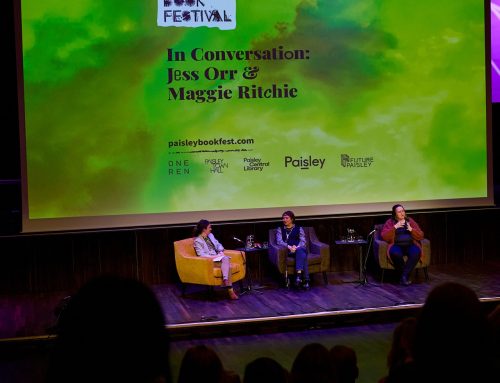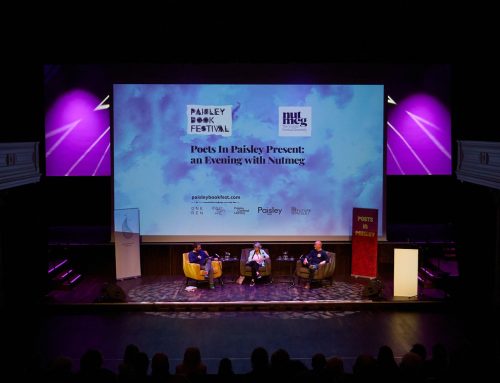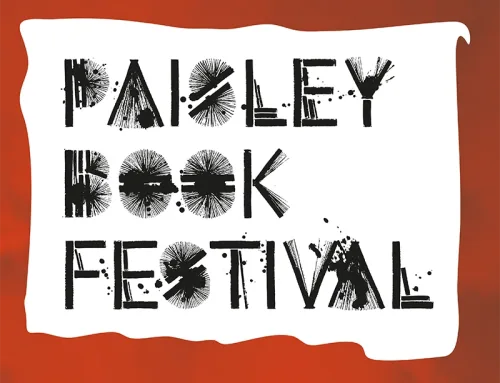The true story of the Bargarran accused witches is a well-documented narrative and one that is full of mystery and intrigue.
Researching the witch trials in Renfrewshire for a children’s book, Victoria discovered the story of the Bargarran witches of Paisley; a tale so extraordinary, and so horrifying that she decided not to use it for her younger readers. But Red Runs the Witch’s Thread revisits this historical tragedy and is the basis for this adult work of fiction.
The intrigue revolves around the central character – Christian Shaw, who, as an eleven-year-old girl, was at the centre of a witch hunt in which 35 individuals were accused of witchcraft, seven of whom were condemned to death and hung on the Gallows Green in Paisley, their bodies subsequently burned. One man, John Reid, hanged himself in his cell the day before his trial rather than face the same fate.
What makes the reality behind this witch-hunt so intriguing is the fact that Christian Shaw, whose father was the laird of Bargarron, went on to become, not only a wealthy factory owner in her own right, but someone to whom a great deal of the future prosperity of the town of Paisley has largely been attributed. She was a pioneer for the thread industry in a period where women were usually far removed from industrial prominence. In Victoria’s novel, the story oscillates between the witch trials and Christian’s later life, a literary device adopted in order to present the reader with some potential imaginings about what was happening at the time.
It is recorded in the records of the Renfrewshire Witch-hunts that, as an 11-year-old child, Christian Shaw experienced strange convulsions, seizures and bouts of severe illness. But what was really going on?
Victoria, pointing out that the festival theme was “Imagine Something Different”, endeavoured to do just that, considering a number of possibilities. Was it a physical illness she had? Was there adult collusion in the affair that led to so many people being accused as witches? Was it the case of a middle child looking for attention, or was Christian affected by mental illness induced by living in a repressively religious middle-class household.
Victoria suggested an alternative. What if Christian’s accusations and her ill-health were down to a child’s inability to make sense of the world around her. Reading from her book, Victoria holds the audience enthralled as she describes Christian’s reaction as her mother gives birth to a younger sibling in the flickering candlelight of the birthing room; the sounds, smells, flesh and blood creating a horror scene exacerbated by the crow-like shadows cast by the midwife. Shortly after, when Christian is confronted with the facts of life, the path is open for a childlike existential crisis.
The power of Victoria’s performance leaves us all wondering – what happens next? Is this experience a crucial factor in the accusations of witchcraft that subsequently ensue? Or is there some dark connection between the visit of Agnes Naismith, one of the accused who is also spuriously connected at the trial to the death of two children at a previous time? There is no doubt that readers are promised a powerful read in this book!
In the second segment of the event, Clarke Wallace from the Paisley Tweed Mill Museum gave a fascinating presentation on Christian Shaw’s legacy. The fact that she went on to become a successful factory owner in her own right was a remarkable feat. Regardless of the accusations of industrial espionage, her important innovations assisted, first the Clarke family then the Coates’ to use the opportunities of empire to make Paisley the thread capital of the world, spawning an industry that operated in 43 countries and employed over 93,000 workers. Clarke’s tales of the achievements and collective endeavours of the mill workers were enlightening and inspiring. But hero or villain, the story of Christian Shaw is certainly one that will be discussed for a long time to come.
Encouraged by cake, sparkling soft drinks and a souvenir pack, the audience were left intrigued and refreshed at what was an excellent insight into Paisley history, the dark past of the witch-hunts and the possibility of continuing this enthrallment by reading Victoria’s book.









